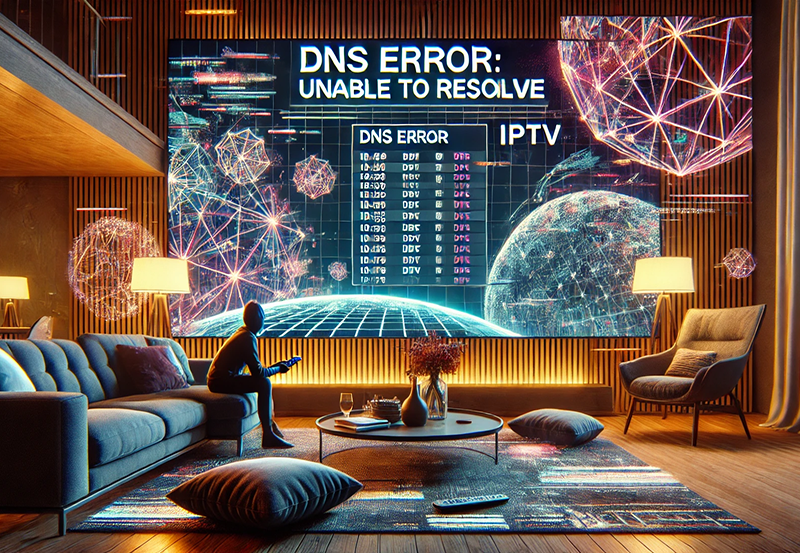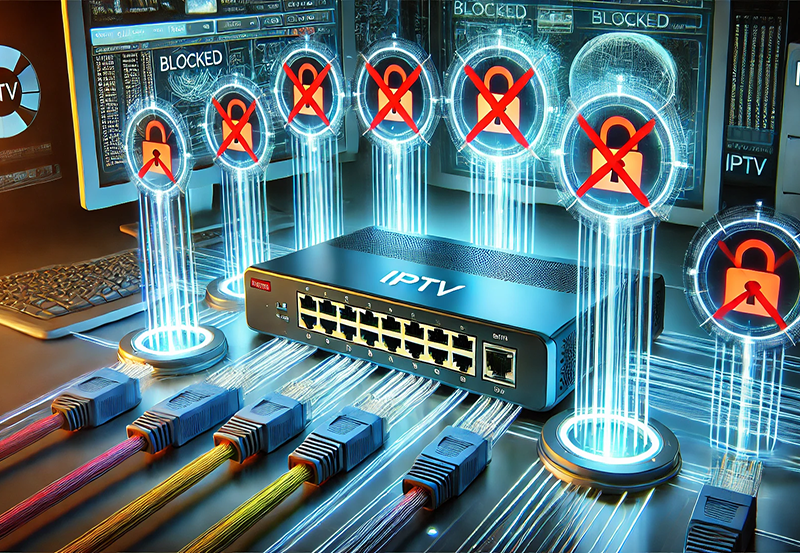In the rapidly evolving realm of digital entertainment, IPTV stands out as a beacon for those craving quality content and flexibility. Whether you’re a tech-savvy viewer or a casual entertainment enthusiast, the quest for seamless IPTV streaming quality is universal. This guide is packed with expert insights, unraveling the secrets to not just good, but exemplary IPTV performance. Let’s embark on this journey to unlock the ultimate IPTV experience together.
Understanding IPTV: What Sets It Apart
The first step to enhancing your IPTV experience is understanding the basics. IPTV, or Internet Protocol Television, leverages internet protocols to deliver television content. Unlike traditional methods that rely on satellite or cable formats, IPTV offers more control and a customized way of consuming content.
IPTV services are particularly favored for their ability to offer a diverse range of channels, including on-demand content. This flexibility allows users to craft their viewing experiences without the constraints of traditional TV programming. But what really sets IPTV apart is how it blends internet connectivity with television, paving the way for more interactive experiences.
Pro Tip:
Stream top-tier entertainment with IPTV USA, offering unmatched access to live TV and on-demand content.
The Rise of IPTV Providers
As the demand for IPTV grows, so does the number of IPTV providers. Understanding your options is crucial. Whether you’re seeking broad channel packages or specific niche content, selecting the right provider can make all the difference. The competition among IPTV providers has resulted in highly competitive pricing and an assortment of unique features. It’s all about zeroing in on what aligns best with your viewing habits and preferences.
Choosing wisely among IPTV providers can unlock the best IPTV deals tailored to your needs. Think of it as picking the right key for unlocking the gateway to boundless entertainment possibilities.
IPTV Viewing Devices: Choosing the Best Fit
Once you’ve chosen an IPTV provider, the next step is selecting the right device. From smart TVs and computers to streaming sticks and dedicated IPTV boxes, the options are extensive. Each comes with its own set of pros and cons, influencing performance, ease of use, and cost.
Smart TVs offer an integrated experience with apps readily accessible. Streaming devices provide flexibility, turning any screen with an HDMI input into a portal for IPTV streaming. Meanwhile, dedicated IPTV boxes might offer superior compatibility and performance. Consider your priorities and home setup to make the best choice.
Maximizing Internet Speed for Peak Performance
Internet speed is the backbone of IPTV streaming quality. Slow connections can lead to buffering and degraded picture quality, undermining even the best IPTV providers’ capabilities. Ensuring you have sufficient bandwidth is key to a smooth viewing experience.
Understanding Bandwidth Requirements
Bandwidth needs will vary depending on the quality of the stream. Standard definition content demands less than high definition or 4K sessions. It’s advisable to surpass minimum requirements to cater to potential network congestion, additional users, and future upgrades.
The consensus among experts is a minimum of 5 Mbps for standard definition and 25 Mbps or more for UHD streams. However, this can vary based on provider specifications and network conditions.
Optimizing Your Home Network
Even with sufficient bandwidth, a poorly optimized home network can bottleneck performance. Consider upgrading to the latest Wi-Fi standards for improved connectivity or using Ethernet cables where feasible, to ensure a stable connection.
Regularly reboot your router for optimal performance and position it centrally to maximize coverage. A mesh network could also be a solution for larger homes by extending Wi-Fi range without significant speed loss.
Tweaking Streaming Settings for Better Quality
Many IPTV services come equipped with a suite of adjustable settings that can enhance your viewing experience. Familiarize yourself with these options to tailor them to your tastes and technical capabilities.
Resolution and Stream Quality
Higher resolution improves image quality but demands more bandwidth. Adjust your resolution settings based on your internet speed capabilities to ensure uninterrupted viewing. Stream quality settings, often adjustable within the IPTV app, can help you find a balance between quality and stability.
Sometimes, lowering the resolution during peak usage times can prevent buffering. It’s about finding the sweet spot between demands and available resources.
Audio Settings and Background Noise
Enhancing streaming quality isn’t limited to video. Tuning audio settings can exponentially improve your viewing pleasure. Most IPTV apps allow users to adjust audio to compensate for varying acoustics and reduce background noise for clearer dialogues.
Experiment with available audio modes such as stereo or surround, based on your sound system setup. This can significantly improve the overall immersive experience.
Troubleshooting Common IPTV Issues
No technology is without its flaws, and the same goes for IPTV. Familiarizing yourself with common issues and their solutions can save you time and frustration.
Buffering and Lag
Buffering can often be traced back to network issues. Ensuring other household devices aren’t monopolizing bandwidth during your streaming sessions can help. Devices such as computers, phones, and tablets, when downloading updates or running high-bandwidth applications, can sap available network resources.
If buffer-related problems persist, consider contacting your provider for further diagnostics. They may identify ongoing service issues or recommend adjustments to your subscription package.
Access and Compatibility Challenges
Compatibility issues can arise between older devices and newer IPTV apps. Make sure that your device firmware and app versions are up to date. This practice can resolve many errors related to connectivity and video playback.
Some IPTV providers maintain a list of compatible devices, aiding users in verifying compliance and selecting equipment that works seamlessly with their services.
Unlocking the Full Potential of Your IPTV Subscription
Once technical and setup issues are managed, what remains is fully leveraging your IPTV service offerings. Seeking out additional features, programs, and updates ensures that you maximize your subscription’s value.
Exploring Additional Content and Apps
Often, IPTV apps offer more than just TV channels. Familiarize yourself with on-demand offerings, catch-up TV, and exclusive features your provider might offer. These additional options can rejuvenate your streaming experience, introducing you to new content you might not find elsewhere.
Consider diving into app marketplaces linked to your IPTV service. They often provide access to third-party apps that expand the functionality and versatility of the core service.
Keeping Pace with Updates and Upgrades
Technology evolves relentlessly, and keeping pace with updates is essential. These updates not only introduce new features but also patch security vulnerabilities and improve performance, ensuring your streaming experience isn’t just maintained but continues to improve.
Most IPTV services will automate these updates, but staying proactive by manually checking for new updates can prevent you from missing new functionalities or enhancements.
Creative Thoughts: Reimagine Your Streaming Journey
Your IPTV adventure doesn’t have to be limited to traditional convention. With creativity and exploration, you can redefine what’s possible in your home entertainment environment. Whether it’s syncing your playlists to various devices, creating themed nights around specific shows, or experimenting with new content genres, the possibilities are vast.
The key is maintaining curiosity and an open mind. The next step forward in your IPTV journey could be just a click away.
FAQs

What is the difference between IPTV and traditional cable TV?
IPTV uses internet protocols to stream content, often offering more personalization and on-demand options compared to traditional cable, which relies on satellite or coaxial signals and typically offers preset programming schedules.
How do I decide on the best IPTV provider for my needs?
Consider factors like channel availability, pricing, device compatibility, and customer support. Comparing customer reviews and provider-specific features can also help guide your decision.
Can I improve IPTV streaming without upgrading my internet plan?
Yes, optimizing your network setup, adjusting streaming settings, and managing household bandwidth can enhance streaming quality without requiring a more expensive internet package.
Are there any legal concerns with using IPTV services?
While IPTV itself is a legitimate technology, ensure you’re using a licensed provider. Using illegal services might expose you to legal risks or inferior service quality.
How does device compatibility affect my IPTV experience?
Device compatibility can influence picture quality, app functionality, and ease of use. Ensuring your device matches the IPTV service requirements can deliver optimal performance.
How IPTV Enhances Virtual Learning Experiences





